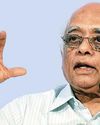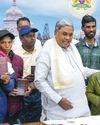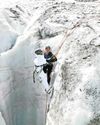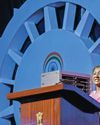
IT IS A FORTUITOUS coincidence that the NITI Aayog has just released its approach paper on a “Vision for Viksit Bharat@2047”, the year marking the 100th anniversary of India’s independence. In exploring what India’s international role and status would be in that year, one may note certain key assumptions and projections contained in the paper.
The “Vision” sets the goal of our national endeavours at becoming a developed nation, for which “we need to strive to be a $30 trillion economy by 2047 with a per capita income of $18,000 ( ₹15 lakh) per annum. The GDP would have to grow nine times from today’s $3.36 trillion and the per capita income would need to rise eight times from today’s $2,392 ( ₹2 lakh) per annum.”
The paper declares: “In a Viksit Bharat, the economy will be a leading global economy, a driver of global economic growth, a magnet of global talent, trade and capital. Its cities and markets will be among the largest and top-most business and financial centres of the world.” Further, there will be “Indian-origin Global Business Champions in manufacturing, services, agriculture, R&D and innovation, technology and scale.”
These projections would make India the third largest economy in 2047 behind China and the US, but what would be the gap with these two powers? It is the relative equation which matters. The Indian economy may end up half as large as China’s, and two-thirds of the US. Projected to grow faster than both China and the US, India would have shrunk the gap with both countries and this will bestow greater agency on it in the shaping and management of the international order by mid-century.
Esta historia es de la edición August 18, 2024 de THE WEEK India.
Comience su prueba gratuita de Magzter GOLD de 7 días para acceder a miles de historias premium seleccionadas y a más de 9,000 revistas y periódicos.
Ya eres suscriptor ? Conectar
Esta historia es de la edición August 18, 2024 de THE WEEK India.
Comience su prueba gratuita de Magzter GOLD de 7 días para acceder a miles de historias premium seleccionadas y a más de 9,000 revistas y periódicos.
Ya eres suscriptor? Conectar

Why Trump covets Greenland
There’s no denying it. Donald Trump is a prince among real estate developers, known for his pushy, winner-takes-all approach.

Bomb man who kept his mouth shut
The best thing about Rajagopala Chidambaram, who passed away recently, was that he “could keep his mouth shut”, as his mentor Raja Ramanna wrote in his memoir, Years of Pilgrimage. No wonder, he tested six atom bombs with no CIA, ISI or satellite spy eyes getting any wiser beforehand.

Extreme to mainstream
With the recent surrender of six Naxals, Chief Minister Siddaramaiah declares Karnataka almost “Naxal-free”. The BJP is questioning his “closeness” to the far left

SUMMITS, SURVIVAL AND SERVICE
Mountaineering expeditions play a crucial role in mountain warfare training

EYES ON THE ICE
THE INDIAN ARMY TRAINS ITS MOUNTAIN WARRIORS AT THE MACHOI GLACIER WHERE THEY LEARN ICE AND SNOW CRAFT IN SUB-ZERO TEMPERATURES. THE HIGH ALTITUDE WARFARE SCHOOL IN GULMARG PREPARES THEM FOR WARS THAT ARE DRIVEN BY TECHNOLOGY AND INTELLIGENCE. ON SNOW-COVERED BATTLEFIELDS LIKE THE HIMALAYAS, THE ARMY WANTS ITS JUNIOR LEADERSHIP TO BECOME DECISION-MAKERS AT THE TACTICAL LEVEL

Time to dream big
Every year, January 12 is celebrated as National Youth Day—as homage to the birth anniversary of Swami Vivekananda, honouring his enduring teachings and visionary ideas.

Climbing the power ladder
In his latest book, T.V. Paul explores India's search for its day in the sun as a global power

Howdy, rowdies
The world is already exhausted, and Donald Trump has not even begun his second term.

The going gets rough
It’s been a very macho fortnight

Eastward Ho!
Odisha, which hosted this year's Pravasi Bharatiya Divas, is emerging as a focal point for India's Act East Policy, given the turmoil in the northeast